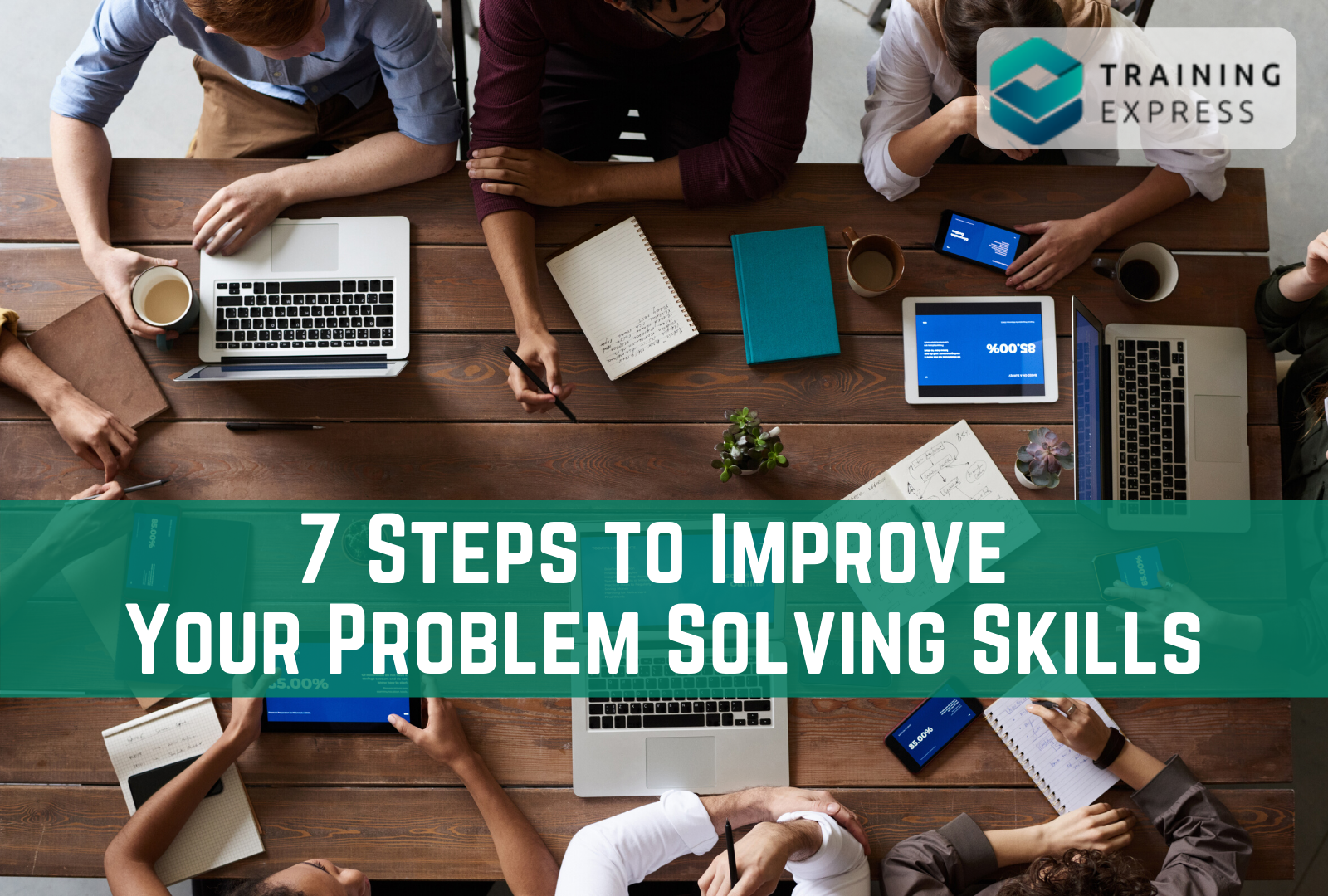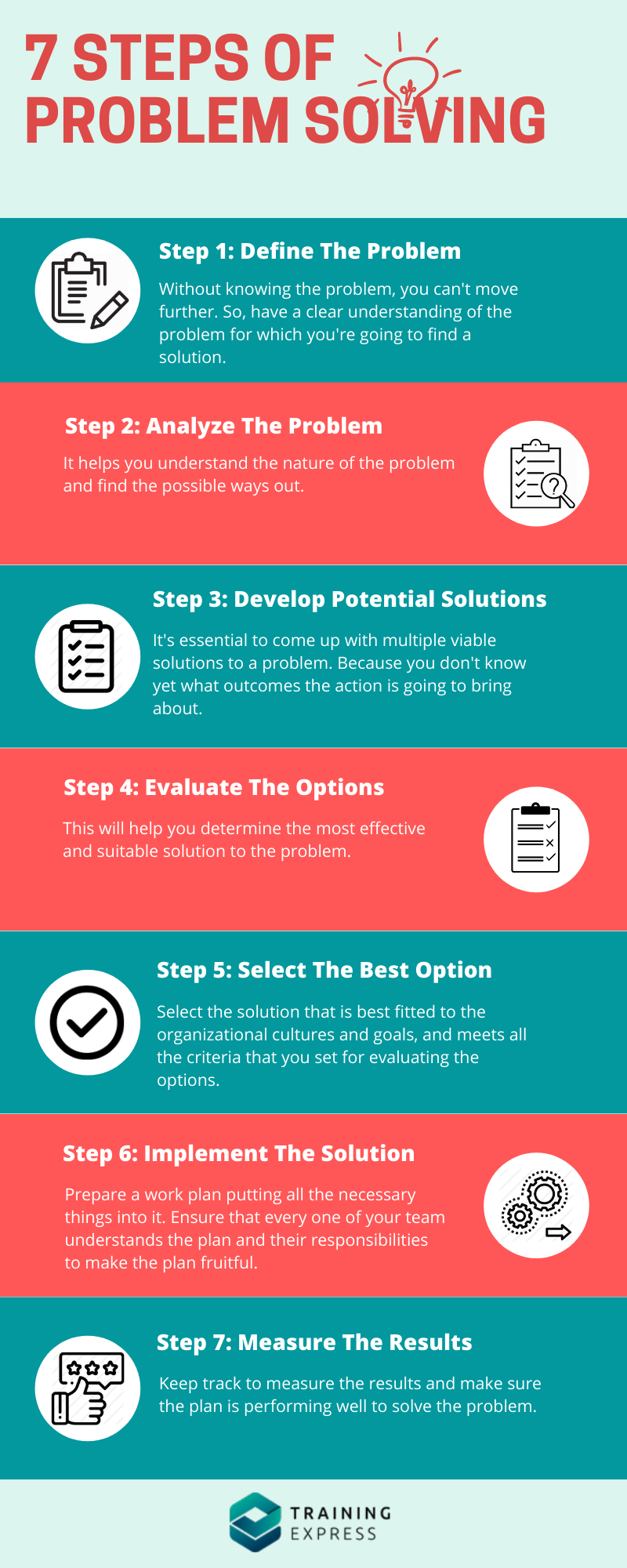

Our lives are full of problems. And the biggest problem is finding an effective solution to any problem. Seems funny, right? But it’s true. Every day, from your personal to professional life, you have to deal with different kinds of problems, and it’s not unnatural that sometimes you struggle to solve them. Though in the end, you find a solution, it takes too much effort and time. Don’t you think it would be better if you could find the solution in the first place? That’s where problem-solving skills would help you a way out.
Problem-solving skills are vital to have in professional life. Many issues arise in the workplace and giving a quick touch up on them is an unwritten duty for you. In a professional setting, it doesn’t matter that much what solution you find to a problem. Rather it matters how you find that solution and how much time it takes. In this case, another skill which is Problem Solving Skills merges up with problem-solving skills. Both are important for your regular duties in the workplace and your job growth, especially when you’re in a leadership or management position. f
7 Key Steps to Improve Your Problem Solving Skills
However, everyone is by born a problem solver. But the thing that counts is how efficiently the problem is being solved. That’s why you should nurture problem-solving skills to become an ultimate problem solver. In this article, you’re going to explore seven effective steps that will help you improve your problem-solving skills. So, without further ado, let’s dig deeper.

Step 1: Define The Problem

The first thing that comes when solving a problem is identifying and defining the problem. Without knowing the problem, you can’t move further. So, have a clear understanding of the problem for which you’re going to find a solution. Define the problem and make it precise. Since you won’t be working alone, describe the context, and make sure it is understandable by others who are involved in the decision-making process. However, different people have different perspectives on what a problem is, and you should keep it in your mind.
If the problem involves software development or coding challenges, don’t hesitate to get coding help to ensure you’re on the right track and can communicate solutions effectively.
Step 2: Analyse The Problem
The second step to solving a problem is analysing the problem. It helps you understand the nature of the problem and find the possible ways out. Develop some creative problem-solving questions in this stage, such as why it is a problem, why it is required to solve it, how to find the solution, what barriers and opportunities lie within the problem, what effect it will cause if the problem isn’t resolved, etc.
Develop these questions and assign answers to them. In the end, you’ll find a clear picture of the whole situation. This will help you prepare your strategy to solve the problem.
Step 3: Develop Potential Solutions
Once you’re done with analysing the problem, you have to look for potential solutions to the problem. Note that I said solutions, not a solution. It’s essential to come up with multiple viable solutions to a problem. Because you don’t know yet what outcomes the action is going to bring about. That’s why you should have alternatives in all possible ways to solve the problem so that you can compare them and pick the best one.
In this regard, you have to set a standard with which you will compare the expected outcomes of the potential solutions. However, don’t use the standard to judge the solutions, instead, use it only for coming up with ideas.
Step 4: Evaluate The Options
After listing down the potential solutions to the problem, your next task is to analyse and evaluate the options. This will help you determine the most effective and suitable solution to the problem. Now it comes how to evaluate the options. Do it almost in the same way you’ve analysed the problem before. This means asking some questions and comparing the answers for different options. So, the creative problem-solving questions that you’ll make to evaluate the problem may look like the followings:
- Is the solution easily achievable?
- How much effort and resources it will take?
- Does it fit the organizational processes and cultures?
- What are the pros and cons of the solution?
- What is the possible outcome of this solution?
- Is it well suited to the time and budget?
Prepare the answers for each of the options and compare them. Then eliminate those which don’t pass the criteria and tailor the list for further action.
Step 5: Select The Best Option

After evaluating all the possible solutions and tailoring the list, you have a concise list of solutions to the problem. Now you have to choose the best solution among these options. Select the solution that is best fitted to the organizational cultures and goals, and meets all the criteria that you set for evaluating the options. In this case, your experience, courage, and decision-making skills will help you to determine the option.
However, you may consult your peers as it would give you different insights into the situation. After selecting the best-suited solution, make the necessary documentation, and submit to the authority for approval.
Step 6: Implement The Solution
You’ve selected the solution to the problem and got it approved by the higher authority. Now it’s time to go for action and showcase your problem-solving skills. So, at first, you have to prepare a detailed work plan putting all the necessary things into it. You have to ensure that every one of your team understands the plan and what are their responsibilities to make the plan fruitful. So, you should communicate well with everyone involved in the plan.
Also, your plan should include actions to be taken if something goes wrong or doesn’t go just like as you thought it would. This is important to make a concrete plan. After setting the plan, arrange everything you require and put your solution into action, and wait for the results.
Step 7: Measure The Results
Your duty isn’t finished with the implementation of your solution. You have to keep track to measure the results and make sure the plan is performing well to solve the problem. Great leaders always keep follow-ups and proper documentation of their actions. It’s helpful in their future challenges and acts as a guideline for their successors. Moreover, it will help you show a scalable and notable outcome of your plan to the authority.
Now it’s time to wrap up. Following these seven simple steps will strengthen your problem-solving skills and make you an efficient problem solver in your organization. However, problem-solving is a vast topic, and there are even more things to explore about it which aren’t possible to include in a single article. If you want to explore more and develop your problem-solving skills, it will be better to take training on this.
But how can you attend formal training when you’ve lots of duties to do? In this case, you can consider taking online training where you can learn anytime from anywhere, and most importantly, without juggling your regular schedule. To help you in this regard, Training Express is offering an online course on problem-solving skills where you’ll be learning from experts. So what are you waiting for? Have a look at this.
Learn More
- Available Courses
- Career Bundles73
- Animal care5
- Law8
- Quality Licence Scheme Endorsed111
- Teaching13
- Teaching & Academics Primary27
- Accounting & Finance Primary30
- Training3
- Design9
- IT & Software44
- Healthcare126
- Marketing31
- Health and Safety402
- Construction48
- Electronics25
- Hospitality22
- Health and Social Care219
- Child Psychology37
- Management377
- Business Skills268
- First Aid70
- Employability264
- Safeguarding75
- Food Hygiene103
- Personal Development1277
 Food Hygiene
Food Hygiene Health & Safety
Health & Safety Safeguarding
Safeguarding First Aid
First Aid Business Skills
Business Skills Personal Development
Personal Development












